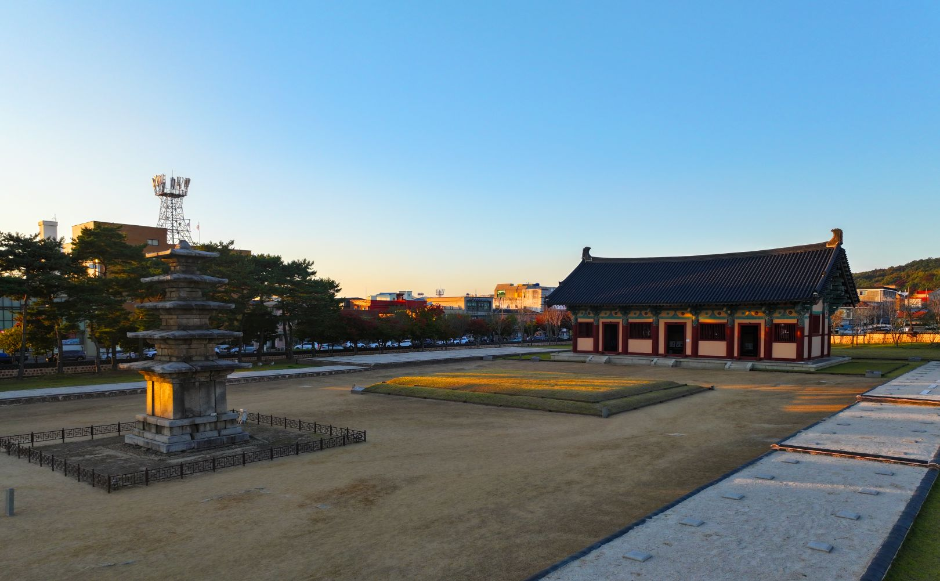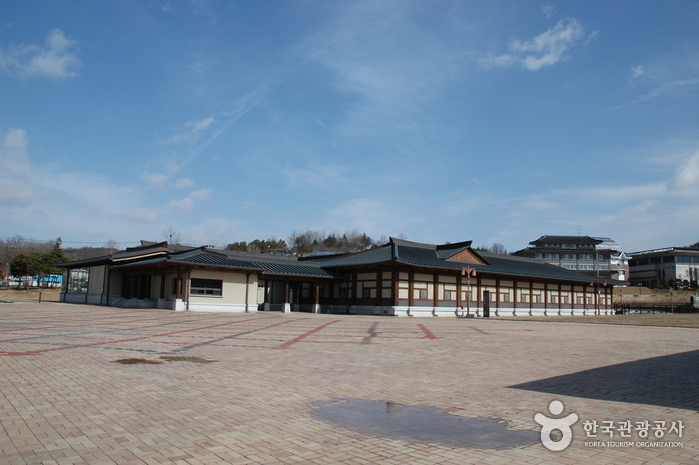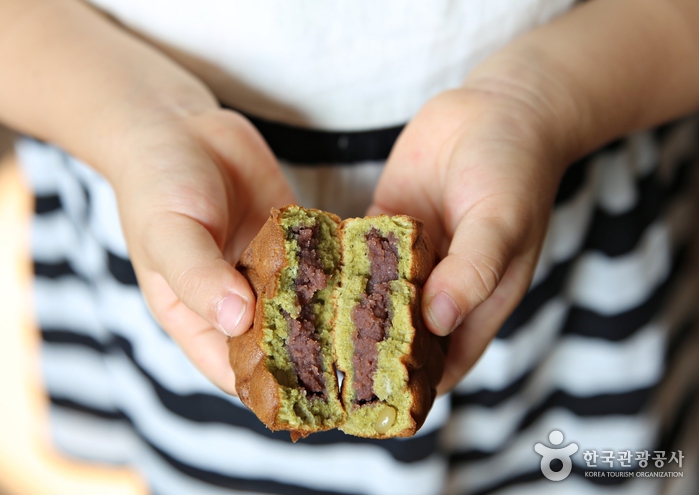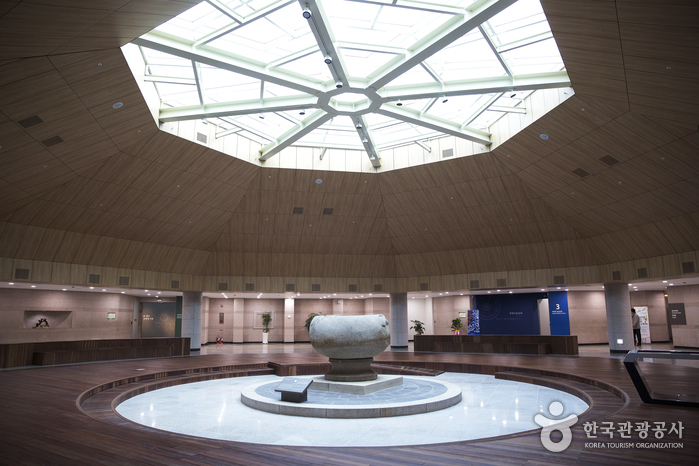Jeongnimsa Temple Site & Sabi-gil (정림사지와 사비길)
18.2Km 2025-08-18
83 Jeongnim-ro, Buyeo-eup, Buyeo-gun, Chungcheongnam-do
Jeongnimsa Temple Site, located in the city center of Baekje, the capital during the Sabi dynasty, is a representative Buddhist site of Baekje. Even after the fall of Baekje, the Five-story Stone Pagoda of Jeonnimsa Temple Site still stands tall today, revealing the historical significance of Baekje. Sabi-gil, an eco-friendly walking trail, takes visitors around many popular attractions from the Baekje era, allowing a glimpse into the history and culture of Baekje.
Jeongnimsaji Museum (정림사지박물관)
18.2Km 2020-12-11
83, Jeongnim-ro, Buyeo-gun, Chungcheongnam-do
+82-41-832-2721
Jeongnimsaji Museum is located in Buyeo, the last capital of Baekje, where the Baekje culture flourished for the 123-year-long “Sabi Era.” The museum was established on the building site of Jeongnimsa Temple, which was a symbolic meeting place for royalty and a center for politics based on Buddhist morals.
The museum highlights the Buddhist culture of Baekje, said to be the origin of Buddhism in Korea and Japan, and Jeongnimsa Temple, known as the culmination of Baekje Buddhism. The museum also seeks to emphasize the advanced technology of Baekje and reenact the Sabi Era using an interactive approach that relies heavily on videos, panels, replicas, and hands-on programs. Main attractions at the museum include the Jeongnimsa Temple Site (Historic Site No. 301), the five-story stone pagoda of Jeongnimsa Temple (National Treasure No. 9) and the seated stone Buddha (Treasure No. 108).
Baekjehyang (백제향)
18.5Km 2020-09-19
17, Sabi-ro 30beon-gil, Buyeo-gun, Chungcheongnam-do
+82-41-836-8729
Baekjehyang is a café serving yeonkkot bbang (lotus bread) and traditional tea which transformed from the Korean restaurant that specialized in yeonnip bap (streamed rice wrapped in a lotus / leaf). Located on the way to Gungnamji Pond, Baekjehyang provide fresh yeonkkot bbang made daily as well as other lotus related food including yeonnip shake (lotus leaf shake), yeonnip cookies and more.
Picturesque Arboretum (Gallery in the Garden) [그림같은 수목원(그림이 있는 정원)]
18.5Km 2024-02-26
102-36, Chungseo-ro 400beon-gil, Gwangcheon-eup, Hongseong-gun, Chungcheongnam-do
The Picturesque Arboretum has nearly 1,330 species of plants, including 460 species of trees, with particular emphasis on pine trees. It is home to a Wildflower Garden, Greenhouse, Lotus Garden, Rock Garden, Observatory, Art Museum, Rhododendron Road, Waterfall, Korea Traditional Furniture Exhibition Hall, Nature Ecology Center, and a café.
Yeonkkot Iyagi (연꽃이야기)
18.7Km 2024-12-10
Yeonkkot Iyagi, which literally means “lotus story,” is a restaurant in Buyeo, Chungcheongnam-do that uses lotus and lotus leaves. It is a restaurant that offers a variety of menu items in addition to lotus leaf rice and lotus tea, which can be enjoyed together during the meal. Lotus leaf rice contains ingredients such as jujubes, ginkgo nuts, and pumpkin seeds, and the scent of lotus leaves permeates the freshly steamed glutinous rice, offering a fragrant meal. The restaurant also has an impressive children's menu called lotus pork cutlet. Another thing to take note of are the lotuses added in the side dishes.
Buyeo National Museum (국립부여박물관)
18.8Km 2021-08-13
5, Geumseong-ro, Buyeo-gun, Chungcheongnam-do
+82-41-833-8562
Buyeo National Museum was first established by the Buyeo Preservation Society in 1929 as a collection of relics and artifacts related to the Baekje kingdom. This collection was on display at a government building from the Joseon dynasty until 1970, when a new building was erected on the southern foothills of Busosan Mountain. It moved again on August 6, 1993 to the current location. The museum has four exhibition halls and an outdoor exhibit with a total of about 1,000 relics on display.
Seodong Park and Gungnamji Pond (서동공원과 궁남지)
19.0Km 2024-06-04
52 Gungnam-ro, Buyeo-gun, Chungcheongnam-do
+82-41-830-2953
Gungnamji Pond, a Historic Site located in Seodong Park, is Korea’s first artificial pond and was created by King Mu from the Baekje dynasty, who fell in love with and eventually married Princess Seonhwa. Gungnamji, literally means a pond in the south of the royal palace in Korean, was the given name according to the Samguksagi records.
According to a record in the Samguksagi, the History of the Three Kingdoms, King Mu dug this lake south of his palace in the 35th year of his reign (634) and connected it by a 7800-meter long waterway to the water source. The king then had willow trees planted around the bank and had an artificial mound constructed in the middle of the lake.
Buyeo Seodong Lotus Festival (부여서동연꽃축제)
19.1Km 2022-05-04
52, Gungnam-ro, Buyeo-gun, Chungcheongnam-do
• 1330 Travel Hotline: +82-2-1330 (Korean, English, Japanese, Chinese) • For more info: +82-41-830-2208
Buyeo Seodong Lotus Festival has been designated as an excellent festival four years in a row by the Ministry of Culture, Sports and Tourism. The festival takes place every July during the summer's peak when the lotus flowers bloom. The festival is based on a historical love story, with programs and performance events focused on story delivery. The festival venue is designed to fit in with the natural settings nearby, serving as a perfect backdrop for taking memorable photos with families and friends.





 English
English
 한국어
한국어 日本語
日本語 中文(简体)
中文(简体) Deutsch
Deutsch Français
Français Español
Español Русский
Русский